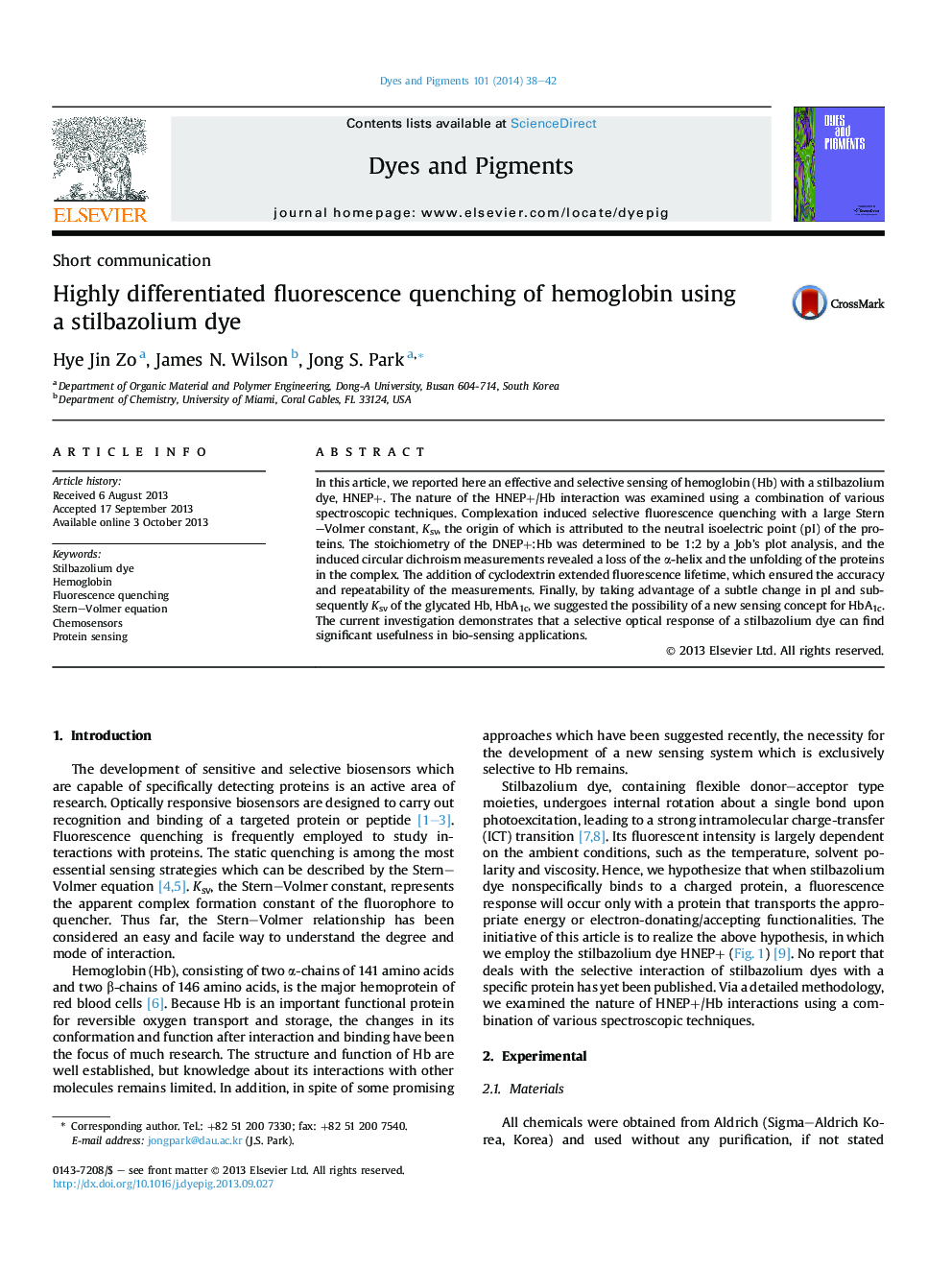| Article ID | Journal | Published Year | Pages | File Type |
|---|---|---|---|---|
| 176092 | Dyes and Pigments | 2014 | 5 Pages |
•We observed an effective and selective fluorescence quenching of hemoglobin with a stilbazolium dye.•The stoichiometry of the DNEP+:Hb was determined to be 1:2 by a Job's plot analysis.•The induced circular dichroism measurements revealed a loss of the α-helix and the unfolding of the proteins in the complex.•Glycated hemoglobin exhibits a slightly reduced fluorescence quenching with a stilbazolium dye.
In this article, we reported here an effective and selective sensing of hemoglobin (Hb) with a stilbazolium dye, HNEP+. The nature of the HNEP+/Hb interaction was examined using a combination of various spectroscopic techniques. Complexation induced selective fluorescence quenching with a large Stern–Volmer constant, Ksv, the origin of which is attributed to the neutral isoelectric point (pI) of the proteins. The stoichiometry of the DNEP+:Hb was determined to be 1:2 by a Job's plot analysis, and the induced circular dichroism measurements revealed a loss of the α-helix and the unfolding of the proteins in the complex. The addition of cyclodextrin extended fluorescence lifetime, which ensured the accuracy and repeatability of the measurements. Finally, by taking advantage of a subtle change in pI and subsequently Ksv of the glycated Hb, HbA1c, we suggested the possibility of a new sensing concept for HbA1c. The current investigation demonstrates that a selective optical response of a stilbazolium dye can find significant usefulness in bio-sensing applications.
